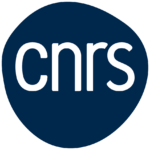CONFERENCE
Motivic homotopy in interaction
Homotopie motivique en interaction
4 – 8 November, 2024

Scientific Committee
Comité scientifique
Aravind Asok (University of Southern California)
Baptiste Calmès (Université d’Artois)
Kirsten Wickelgren (Duke University)
Organizing Committee
Comité d’organisation
Frédéric Déglise (CNRS – ENS de Lyon)
Adrien Dubouloz (CNRS – Université de Poitiers)
Jean Fasel (Université Grenoble Alpes)
Sophie Morel (CNRS – ENS de Lyon)
Paul Arne Østvaer (University of Milan)
–
A1-homotopy first appeared in the 1993 PhD thesis of Voevodsky as an approach to Beilinson’s conjectural framework of motives. The domain then exploded during the attempts of Voeovdsky to prove the Milnor conjecture, leading to the now well established theory of Morel and Voevodsky, sometimes called motivic homotopy because the conjectural theory of Beilinson has found a beautiful homotopical interpretation, perfectly analogous to the place of singular homology and ordinary spectra in topology.
The internal development of motivic homotopy have grown in the last years in several direction, from fundamental results such as the six functors formalism, duality, framed correspondences, cohomological orientation theories to the computational tools such as Morel’s quadratic degree, characteristic classes, Chow-Witt groups and hermitian K-theory.
Meanwhile, applications of motivic homotopy are growing. An ongoing excitement comes from many directions of interactions where motivic homotopy serve as a powerful tool to find analogy and build bridges. The possibilities are immense, ranging from topology, differential geometry, real algebraic geometry, algebraic cycles and arithmetic.
The purpose of this conference is to reinforce these interactions, bringing together specialists both of motivic homotopy and of closely connected areas, and to offer the possibility to your researchers and students to participate and contribute to a stimulating atmosphere of exchanges, courses and research talks.
To this end, the conference program includes time slots dedicated to short 20-minute presentations at the initiative of participants, after selection by the scientific committee from the proposals received. Participants wishing to propose a contribution for a presentation of this type are invited to send a title and abstract to a1homotopy.cirm@ens-lyon.fr.
L’A1-homotopie est apparue pour la première fois dans la thèse de doctorat de Voevodsky en 1993, comme une possible approche de la théorie conjecturale des motifs mixtes formulée par Beilinson. Le domaine a ensuite explosé tout au long des premières attaques de Voeovdsky sur la conjecture de Milnor, conduisant à la théorie maintenant bien établie de Morel et Voevodsky, maintenant baptisée homotopie motivique en raison de ses liens avec la théorie conjecturale de Beilinson : la cohomologie singulière et les complexes motiviques y trouvent une parfaite interprétation homotopique, tout à fait analogue à l’homologie singulière et les spectres dits ordinaires en topologie.
Le développement interne de l’homotopie motivique a progressé ces dernières années dans plusieurs directions, depuis les résultats fondamentaux tels que le formalisme des six foncteurs, la dualité, les correspondances « framed », les théories d’orientation cohomologique, jusqu’aux outils de calcul tels que le degré quadratique de Morel, les classes caractéristiques, les groupes de Chow-Witt et la K-théorie hermitienne.
Parallèlement, les applications de l’homotopie motivique se multiplient. Un mouvement exaltant vient de nombreuses directions d’interactions où l’homotopie motivique sert d’outil puissant pour trouver des analogies et construire des ponts. Les possibilités sont immenses, allant de la topologie et la géométrie différentielle à la géométrie algébrique réelle en passant par les cycles algébriques et l’arithmétique.
Le but de cette conférence est de renforcer et de diffuser ces interactions, en rassemblant d’une part des spécialistes de l’homotopie motivique et de domaines étroitement liés, et d’offrir la possibilité à des jeunes chercheurs, post-doctorants et doctorants de participer et de contribuer activement à une atmosphère stimulante d’échanges, de cours et d’exposés de recherche.
Dans ce but, le programme de conférence inclut des plages horaires qui seront dédiées à de courtes présentations d’une vingtaine de minutes à l’initiative des participants, après une sélection effectuée par le comité scientifique parmi les propositions reçues. Les participants souhaitant proposer une contribution pour une présentation de ce type sont invités à faire parvenir un titre et de résumé à l’adresse a1homotopy.cirm@ens-lyon.fr.
MINI-COURSES
Annette Huber-Klawitter (University of Freiburg) What motives know about periods — and the other way around
Marc Levine (University of Duisburg-Essen) Localization and virtual localization, with applications to quadratic curve counts and DT invariants
Sabrina Pauli (TU Darmstadt) Quadratic enumerative invariants and local contributions
Charanya Ravi (TIFR Mumbai) Cohomology of algebraic stacks
Anand Sawant (TIFR Mumbai) Cellular A1-homology of smooth algebraic varieties
CONTRIBUTED TALKS
Felipe Espreafico Guelerman (Sorbonne Université) Motivic and Arithmetic Refinements of DT invariants
Parnashree Ghosh (Tata Institute of Fundamental Research TIFR) On non-trivial linear hypersurfaces and their A1–contractibility property in connection to the Zariski Cancellation problem
Clémentine Lemarié-Rieusset (University of Duisburg-Essen) Linking of motivic spheres
Samuel Lerbet (Université Grenoble Alpes) A real analogue of the Hodge conjecture
Krishna Kumar Madhavan Vijayalakshmi (Université de Bourgogne) A1-Contractibility of Smooth Affine Schemes over a Dedekind scheme
Arnaud Mayeux (The Hebrew University of Jerusalem) Multi-centered dilatations and applications to deformation spaces
Ming Ng (Queen Mary University of London) K1(V ar) is generated by Quasi-Automorphisms
Keyao Peng (Université de Bourgogne) Cellular A1-homology of toric surfaces
Gereon Quick (Norwegian University of Science and Technology) Massey products and formality for real projective groups
Ivan Rosas-soto (Université de Bourgogne) Decomposition of étale motives with integral coefficients
Biman Roy (Tata Institute of Fundamental Research TIFR) A1-homotopy types of A2 and A2 {(0,0)}
Raphaël Ruimy (University of Milan) Constructible étale motives are of geometric origin
Tariq Syed (Heinrich Heine University Düsseldorf) Cyclic coverings from a motivic viewpoint
Swann Tubach (ENS de Lyon) Integral Nori motivic sheaves
Egor Zolotarev (Ludwig-Maximilians-University Munich) The geometric diagonal of the special linear algebraic cobordism











